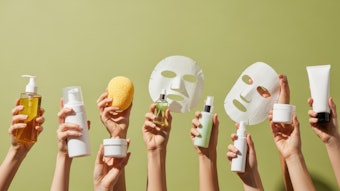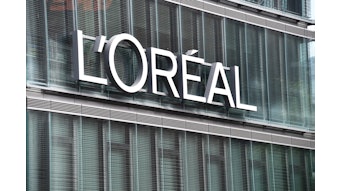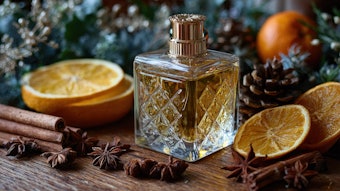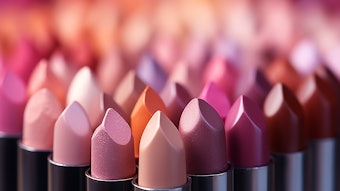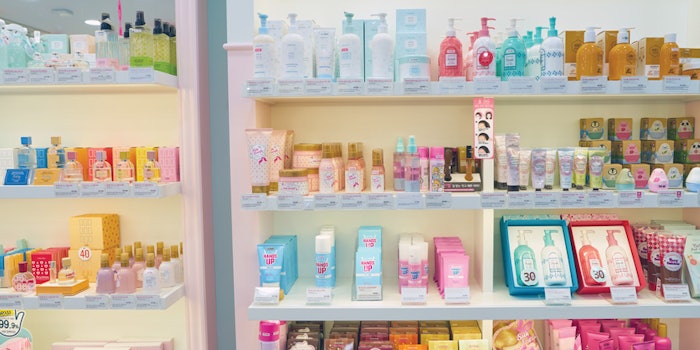
Fast-paced innovation and diversity of ingredients, textures, experiences and packaging are the hallmark of K-beauty products. Until recently, Japanese beauty has played a lower key role, but the spotlight has now moved onto this vibrant and sophisticated market, providing another new and exciting focus for brands and consumers.
Getting the Glow: Korea vs. Japan
Korean consumers enjoy novelty and seeking out new products for better benefits and results. According to Mintela data, consumers in their 20s and 30s are the most vibrant group, adopting and spreading new trends while actively engaging with brands.
The Korean beauty routine is famous for its many and elaborate steps based around adding multiple layers for perfect dewy-looking skin. Koreans, especially those in their 20s, use the term “chok” to describe an ideal radiant glowing complexion.
“In addition to dewy skin, consumers pay attention to a healthy skin barrier, as well as good oil and water balance in the skin, which gives a glow from within,” says Sharon Kwek, senior innovation and insights analyst (beauty and personal care), Mintel, who notes that consumers increasingly think that their skin has become more sensitive and look for safe and simple solutions in skin care.
Meanwhile, Japanese skin care routines have shifted from traditionally lengthy rituals to shorter, more focused regimes comprising essential steps with multifunctional benefits.
Jane Jang, senior beauty analyst, Mintel, describes the average evening J-beauty routine, which includes double cleansing (makeup remover and face wash), toner (called lotion in Japan), serum and moisturizer, with the addition of a sheet mask once or twice a week.
“New extreme all-in-one products help create a very simple routine of cleansing and moisturizing,” Jang says, citing Senka Perfect Gel Night, which combines lotion, emulsion, serum, cream and a pack in one formulation.
4 Top K-beauty Trends
1. Oil Serums
These serum-like facial oils have a watery and lightweight texture, absorb quickly and lock in moisture without leaving a sticky residue. Used as an alternative to conventional serums, oil serums come in varying formats, including on-the-go mists or variants that are mixed into foundation to increase natural glow.
Market example: Laneige Water Bank Double Layering Oil
2. Tone Up Creams
Tone up creams give an instant whitening effect on the skin and are popular with young Korean and Chinese consumers. Used to give a “no makeup” look, the current launches have pink hues to brighten the complexion.
Market example: A’Pieu Baby Tone Up Cream
3. Cica Creams
These products use Centella asiatica—also known as centella, Asiatic pennywort and Gotu kola—a medicinal herb used in treating and healing wounds. The soothing and moisturizing gel-type balm is good for sensitive skin.
Market example: Innisfree Bija Cica Balm
4. Peeling Pads
Gentle exfoliation is an integral part of Korean’s regular skin care routine, and products such as serums and toners include gentle exfoliating ingredients like AHA, BHA and PHA. Apart from serums and toners, pad formats are becoming more popular.
Market example: BRTC Multi-Vital Peeling Pad
Japan’s Slow Innovation Cycle
Japan has suffered from an economic downturn, aging population and market saturation, causing the beauty market to stagnate for some time. At the same time, Japan has undergone extensive segmentation, making it more fragmented than any other beauty market, including South Korea.
“Japanese consumers have sophisticated attitudes toward beauty, but they tend to stick to the products they are satisfied with or that have been popular for a while,” says Jang.
Japanese consumers are therefore less likely to jump on every new trend, and it takes them time to try and adopt new product formats. As a result, Japanese beauty brands are more circumspect in their launch programs, as they are not under the same pressure to churn out new products at highly competitive price points, notes Vivienne Rudd, director of global innovation and insight, beauty and personal care, Mintel.
Consequently, Japanese beauty has been pushed out of the spotlight by K-beauty’s never-ending stream of new textures, formats and packaging concepts.
“That’s unfair,” Rudd says, “because anyone lucky enough to go to beauty stores in Japan is wowed by highly effective innovative skin care, hair care and color cosmetics.”
Overlooked J-beauty Innovation
Despite this, Japan is the most developed and advanced beauty market in Asia, with a steady stream of innovation coming from domestic companies. Areas that global beauty companies should keep a close watch on include senior beauty, time-saving products and protection beauty.
Rudd declares J-beauty “a confident, expressive form of beauty that blends technical expertise, traditional ingredients, and a sense of fun and experimentation. If I’m looking for cleansing products, and, above all, hair care products that offer something new and interesting, Japan is where I look first.”
However, this is not to say that Japan does not innovate: probiotic skin care first started in Japan and Yakult, best known for its probiotic drinks, has been selling prestige probiotic facial skin care for years.
Other groundbreaking beauty innovations that started in Japan include hair treatments with camellia oils, and makeup for women in their 50s and 60s from Kanebo’s Chicca and Shiseido’s Prior.
Beyond Korea and Japan
Korea and Japan are by no means the only Asian countries making waves in beauty. Thailand has a vibrant beauty business with local brands that meet the demands of its consumers. These include the leading cosmetic brand Mistine, which is heavily marketed, Namu Life, best known for its snail white cream, and Gla Nature, made from Asian herbs and essential oils.
Elsewhere, My Beauty Diary masks are huge in Taiwan, Singapore and Malaysia, among other markets, where there is a strong culture of local brands. For example, in Taiwan, celebrities, bloggers and dermatologists create their own lines in partnership with locally manufactured brands.
Footnotes:
awww.mintel.com
Imogen Matthews is a consultant to in-cosmetics. For more information, contact www.imogenmatthews.co.uk.



